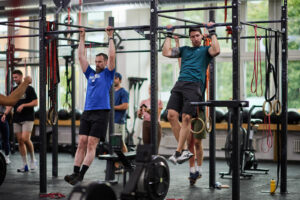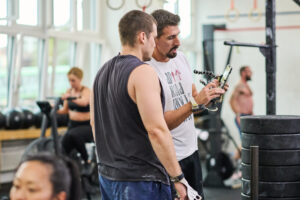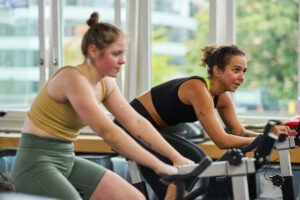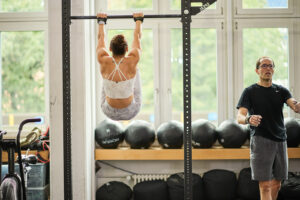
When we talk about fitness, we often focus on strength, body composition, or flexibility. But there’s another measure that might be even more important for your long-term health and independence: VO2 max.
What is VO2 max?
VO2 max stands for maximal oxygen uptake — the maximum amount of oxygen your body can use during intense exercise. Think of it as your engine size: the higher your VO2 max, the more oxygen you can deliver to your working muscles, and the harder and longer you can perform.
It’s measured in milliliters of oxygen per kilogram of body weight per minute (ml/kg/min) and is influenced by your heart, lungs, blood, and muscles all working together. In other words, it’s a direct reflection of your aerobic fitness.
The problem with “I can do it now”
Just because you can do something now doesn’t mean you’ll be able to do it later.
Your VO2 max naturally declines with age — research suggests it drops about 10% per decade after age 30, and possibly faster if you’re inactive.
That means if you want to be able to comfortably walk uphill, carry groceries, or play with your grandkids in your eighties, you can’t just be able to do those things now — you need to be able to do far more in your fifties and sixties than you expect to be doing in your eighties.
Why? Because those abilities will shrink with age. If you’re only just able to handle a task today, you’ll likely struggle with it a decade from now. The only way to stay capable later is to build extra capacity now.
Building your “fitness reserve”
Think of VO2 max as a savings account for your physical ability. Every workout you do now is a deposit. The higher your balance, the longer you can afford the withdrawals that aging will inevitably make.
If climbing stairs today takes 50% of your VO2 max, you’re fine. But if you lose capacity and it suddenly takes 80–90% of your max, it becomes exhausting. Build that reserve now so that even decades later, everyday life doesn’t push you near your limit.
Here’s a real-life example: imagine two people in their late 50s. Both can walk up three flights of stairs today. But one has a high VO2 max, so it only takes 40% of their capacity. The other has a lower VO2 max, and that same staircase already takes 75% of their effort. Fast forward 20 years — the first person still climbs the stairs without thinking about it, while the second person is forced to stop halfway, gripping the railing to catch their breath. The difference isn’t willpower — it’s reserve capacity built years earlier.
How CrossFit Kreis 9 helps improve VO2 max
At CrossFit Kreis 9, improving VO2 max isn’t an accident — it’s built into the way we train. Our programming blends:
- High-intensity intervals – Short bursts of effort at near-maximum output, like rowing sprints or bike intervals, train your heart and lungs to deliver and use oxygen more efficiently.
- Longer aerobic efforts – Steady, moderate workouts improve your base endurance so that you can do more before fatigue sets in.
- Functional movements – Because you’re using large muscle groups together, your cardiovascular system is challenged in a way that mirrors real life, not just gym machines.
- Strength work – More muscle mass means more oxygen usage, which helps boost your VO2 max and keeps you capable for longer.
We also scale workouts for every fitness level, so whether you’re starting from scratch or already fit, you’re training in the zone that creates real adaptation without overtraining.
The result? You’re not just getting stronger or leaner — you’re increasing the one metric that predicts your future independence and ability to live life on your own terms.
The good news – it’s never too late
VO2 max can be improved at any age, and gains are possible even well into your 70s. The secret is consistency — training 3–5 times per week, challenging your limits, and sticking with it year after year.
Every CrossFit Kreis 9 class you attend is a deposit into your “fitness bank account.” Over time, that account becomes the reserve that lets you keep traveling, hiking, carrying groceries, climbing stairs, and saying “yes” to opportunities — even decades from now.
Think of it this way: the more you invest in your VO2 max today, the more “spending power” you’ll have for adventures, hobbies, and daily life in the future. And unlike money in the bank, you can’t earn it back instantly when you run low — you have to build it slowly, consistently, and intentionally.
What’s next
In our next post, we’ll share VO2 max benchmarks for different ages and genders, how to measure yours, and how to know if you’re in the “excellent” range. You’ll get real numbers, simple testing options, and clear steps to track your improvement over time.
At CrossFit Kreis 9, that’s exactly what we train for: not just the ability to move well today, but the freedom to keep living life fully tomorrow.




